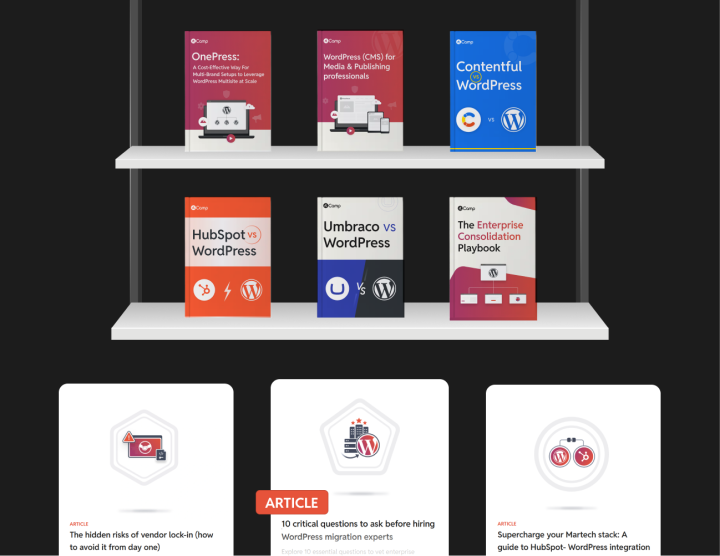Sanity blocks vs WordPress flexibility
When it comes to managing content, both Sanity CMS and WordPress take distinct approaches. These differences directly impact how businesses handle content structuring, updates, and cross-platform consistency. Let’s compare Sanity’s block content approach with WordPress’ block editor capabilities to see how they stack up for real-world business use cases.
Sanity’s modular blocks with Portable Text
Sanity CMS organizes every piece of content like text, images, videos, or interactive elements as blocks. This modularity allows businesses to create reusable content that adapts across various platforms. For instance, an e-commerce website using Sanity CMS can integrate product descriptions, promotional images, and instructional videos seamlessly into a single flow.
Sanity’s standout feature here is Portable Text, a JSON-based format that decouples content from its presentation. This design enables businesses to render content differently depending on the platform, be it a website, mobile app, or even voice assistant.
But Is Portable Text Enough for All Businesses?
While Portable Text enables omnichannel delivery, businesses might face challenges such as:
- Requiring custom logic to render JSON-based content across platforms.
- Relying heavily on developer expertise, which can increase costs and implementation time.
- Handling updates and maintaining consistency across all platforms can be resource-intensive for smaller teams.
This raises a question: Does WordPress offer an easier yet scalable solution for similar use cases?
WordPress Gutenberg blocks
WordPress also treats content in blocks, thanks to its Gutenberg Block Editor, which comes built into the WordPress core. Unlike Sanity, where blocks often require developers to implement rendering logic, Gutenberg focuses on making content creation accessible to everyone.
Block-based content without complexity
Gutenberg allows users to build pages with pre-made blocks for text, images, videos, buttons, and more no coding required. For example, a marketing team can design a visually rich landing page in minutes by simply dragging and dropping blocks.
Want to reuse a section like a call-to-action (CTA)? Gutenberg lets you save blocks for later use, ensuring consistency across your site.
Can it do what Portable Text does?
WordPress might not use JSON like Sanity, but it excels in delivering content across platforms through its REST API and WPGraphQL. Businesses can connect WordPress to mobile apps, IoT devices, or any custom frontend, making it just as versatile for omnichannel needs.
Unlike Portable Text, which requires developers to define rendering logic, WordPress’ tools and plugins handle much of this work out of the box.
Scalable and flexible
Whether you’re a small business or a large enterprise, WordPress adapts. It supports traditional websites and headless setups, meaning you can scale your content delivery without starting from scratch.
Plugins like Advanced Custom Fields (ACF) make it easy to manage complex content relationships without custom coding.
Pattern reuse across brand sites
For enterprises managing multiple brand websites, content agility often collides with governance. Each site might recreate the same content blocks or design patterns from scratch. That’s inefficient.
OnePress solves this with synced block patterns and shared component libraries. A hero block, CTA section, or product grid built on one site can be reused (and kept updated) across dozens of others.
This gives enterprises the dual advantage of speed and consistency.







